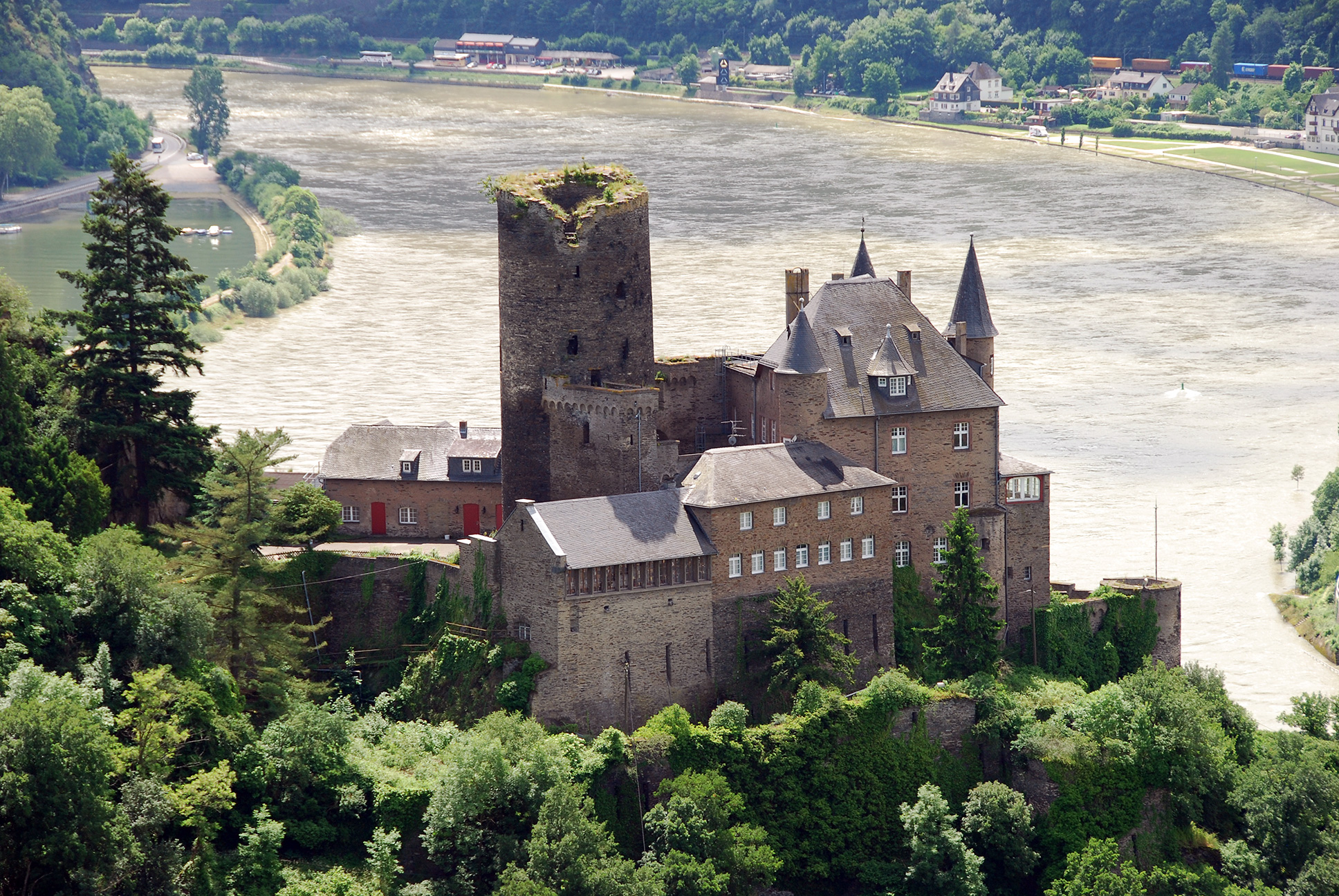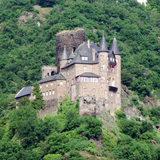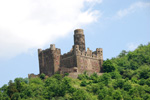History
Burg Katz resides atop a protruding hilltop between the Rhine Valley and Forstbach Valley overlooking the River Rhine above St. Goarshausen. Burg Neukatzenelnbogen was constructed around 1371 by Count Wilhelm II of Katzenelnbogen.

The Counts of Katzenelnbogen served as a powerful family who controlled Burg Rheinfels and other castles along the Rhine. Just down the River Rhine, the Archbishop of Trier built Burg Deuernburg in 1356. Shifting power and antagonism between respective castle owners, Counts of Katzenelnbogen, and Archbishop of Trier fueled much hostility. The "cat and mouse game" between them inevitably resulted in the assignment of nicknames to castles that are still popular today. This is clearly illustrated by Burg Katz (Cat) for Burg Neukatzenelnbogen and Burg Maus (Mouse) for Burg Deuernburg. Following the death of the last remaining Count, Philipp I of Katzenelnbogen, in 1479, the castle passed to Landgraves of Hesse.
At the beginning of the Thirty Years' War, a massive siege in 1626 was undertaken at Burg Katz and Burg Rheinfels due to a struggle between the Houses of Hesse-Kassel and Hesse-Darmstadt. The 33-day siege lasted from July 21st to August 24th, 1626, and was one of the most important military events the Rhine River experienced. Two batteries continuously bombarded Burg Katz. Verdugo led his Spaniards five times against the castle, and they repelled five times. Both castles showed enormous devastation. For Burg Katz, the roof of the high tower and the commander's apartment, hit by glowing bullets, had burned down to the masonry. A courier arrived from Kassel with the instruction to avoid further useless bloodshed and to evacuate the fortresses, which were only ruins, provided the garrisons were granted an honorable withdrawal. On September 3rd, 1626, the peace pact was concluded, and the next day the regiment at Burg Katz left the scene of their heroic deeds in all honors "with loud drums, flying flags, burning fuses and bullets in their mouths."
In 1692, Burg Rheinfels across the River Rhine was attacked by 28,000 French soldiers. As a result, Burg Katz also suffered damage from French artillery fire during the attack on Rheinfels. The French returned nearly seven decades later, in 1758, to launch an attack against Burg Rheinfels. Due to its deteriorated condition, the castle was surrendered without much fighting. Burg Katz was also attacked. The garrison within Burg Katz, led by Captain von Ende, bravely fought for three days until their ammunition was exhausted.
In 1806, Napoleon Bonaparte ordered Burg Katz to be obliterated during his battle with the Prussians, reducing the castle to ruins. The ruins had several owners until 1896 when Landrat Ferdinand Berg purchased it, who performed various restoration efforts based upon drawings by Dilich. Since 1989, Burg Katz has been under private ownership.
Castle Highlights
Today, the castle consists primarily of a great hall and bergfried or keep that initially rose to 40 meters (approximately 131 feet) in height. While the fortification is privately owned and not open to the public, a spectacular view may be attained from the village of St. Goar across the River Rhine.
In addition, picturesque sights are possible from Dreiburgenblick above St. Goarshausen, situated on the hill across the valley from the castle as pictured above. The closest castle open to the public is Burg Rheinfels, which may be reached via a car ferry that crosses the River Rhine between St. Goarshausen and St. Goar.




